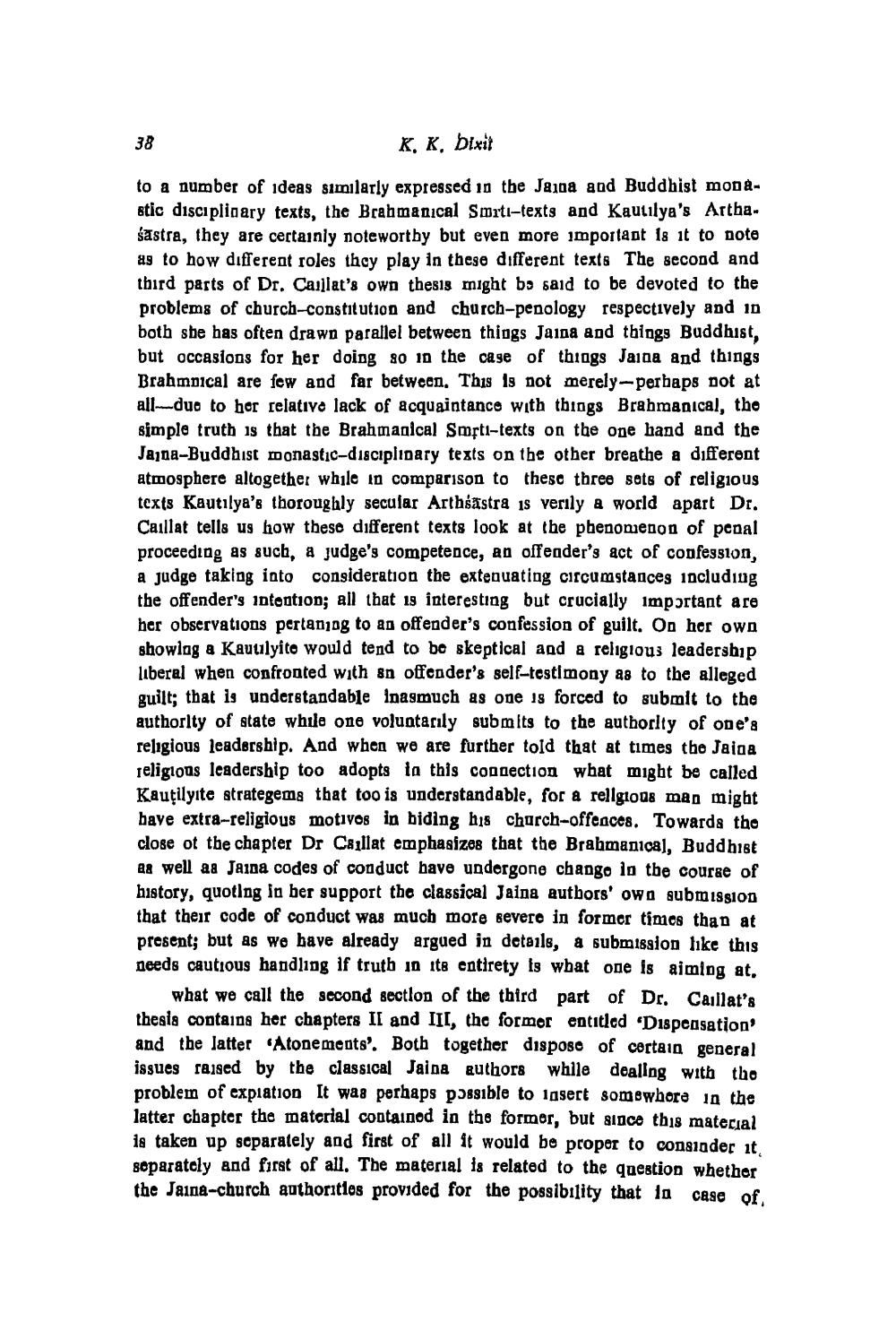________________
38
K, K, Dixit
to a number of ideas similarly expressed in the Jaina and Buddhist monastic disciplio ary texts, the Brahmanıcal Smrti-texts and Kautilya's Arthaśastra, they are certainly notewortby but even more important 18 it to note as to how different roles they play in these different texts The secood and third parts of Dr. Caillat's own thesis might be said to be devoted to the problems of church-constitution and church-penology respectively and in both she has often drawn parallel between things Jaina and things Buddhist, but occasions for her doing 80 in the case of things Jaina and things Brahmnical are few and far between. This is not merely-perhaps pot at all due to her relative lack of acquaintance with things Brahmanical, the simple truth is that the Brahmanical Smsti-texts on the one hand and the Jajna-Buddhist monastic-disciplinary texts on the other breathe a different atmosphere altogether while in comparison to these three sets of religious texts Kautilya's thoroughly secular Arthśästra is verily a world apart Dr. Caillat tells us how these different texts look at the phenomenon of penal proceeding as such, a judge's competence, an offeader's act of confession, a judge taking into consideration the extenuating circumstances including the offender's intention; all that 19 interesting but crucially important are her observations pertaning to an offender's confession of guilt. On her own showlag a Kauulyito would tend to be skeptical and a religious leadership liberal when confronted with an offender's self-testimony as to the alleged guilt; that is understandable inagmuch as one is forced to submit to the authority of state while one voluntarily submits to the authorlty of one'a religious leadership. And when we are further told that at times the Jaida religious leadership too adopts to this connection what might be called Kautilyate strategems that too is understandable, for a religious man might bave extra-religious motivos in biding his church-offences. Towards the close of the chapter Dr Caillat emphasizes that the Brahmanica), Buddhist Awell as Jaina codes of conduct have undergone change in the course of history, quoting in her support the classical Jaina authors' own submission that their code of conduct was much more severe in former tímos than at present; but as we have already argued in details, a submission hike this needs cautious handling if truth in its entirety is what one is aiming at.
what we call the second section of the third part of Dr. Caillat's thesia contains her chapters II and III, the former entitled 'Dispensation' and the latter Atonements'. Both together dispose of certain general issues raised by the classical Jaina authors whlle dealing with the problem of expiation It was perhaps possible to lasect somewhore in the latter chapter the material contained in the former, but since this material is taken up separately and first of all it would be proper to consider it separately and first of all. The material is related to the question whether the Jaina-church authorities provided for the possibility that in case of




